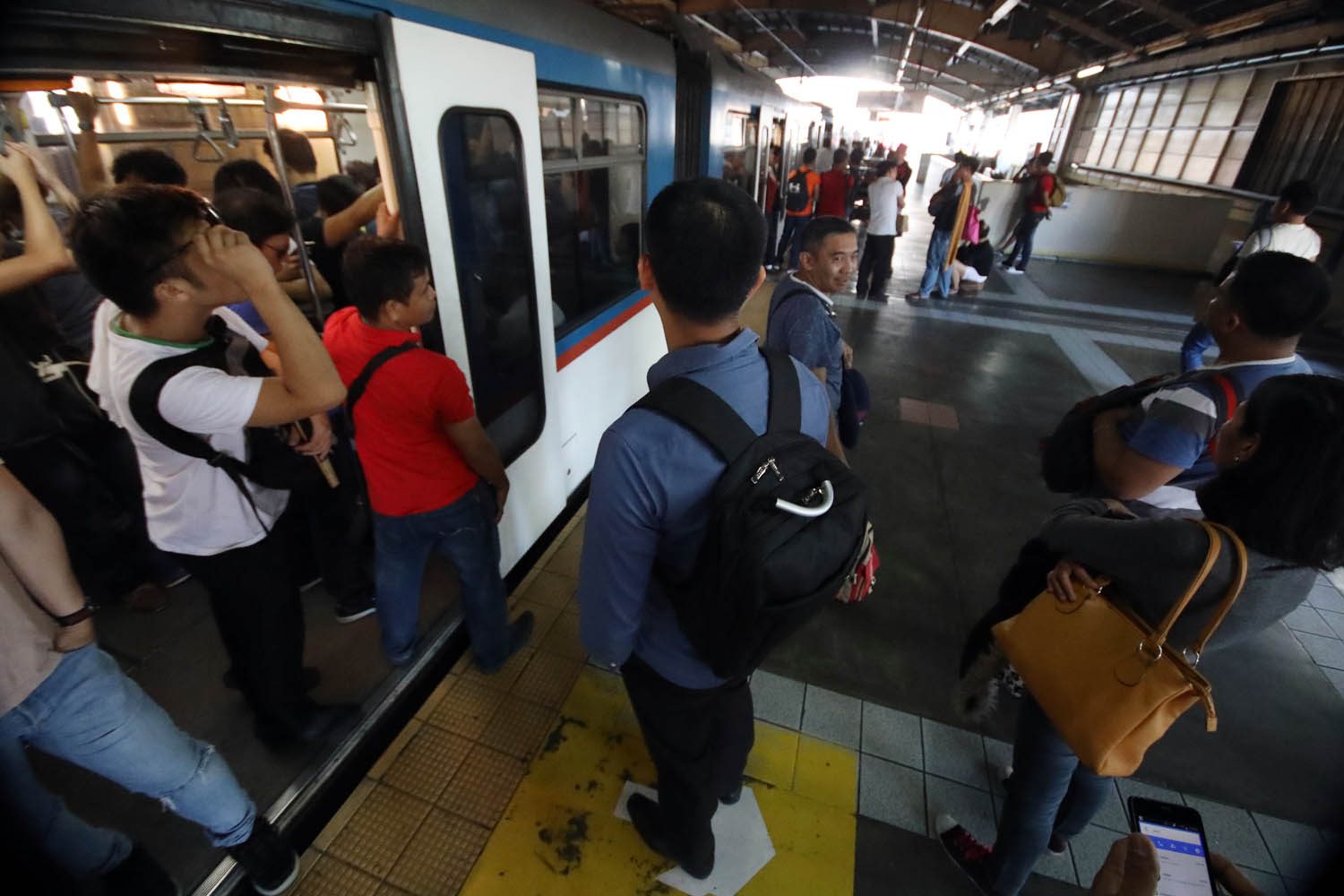SUMMARY
This is AI generated summarization, which may have errors. For context, always refer to the full article.

MANILA, Philippines – The Department of Transportation-Metro Rail Transit Line 3 (DOTr-MRT3) said it prioritized passenger safety over maximizing revenue, even as it blamed the years of neglect, bad maintenance practices, and mismanagement of the Busan Universal Rail Incorporated (BURI) for the persistent problems of the light rail system.
In a statement, the DOTr-MRT3 said that BURI’s stint as maintenance provider resulted in the decrease of available reliable and safe trains and the compounded degradation of the MRT3.
The current DOTr-MRT3 has been operating the system since July 2016.
The DOTr-MRT3 has drawn flak recently after Commission on Audit’s annual report showed a 26% decrease in ridership and revenue of the MRT3. (READ: Tugade on MRT3 losses in 2018: ‘Don’t judge DOTr on isolated cases)
The riding public’s safety was their primary objective, said DOTr-MRT3.
It said, when the MRT3 Maintenance Transition Team took over BURI as maintenance service provider in November 2017, it implemented measures to only deploy trains that were safe and reliable. This meant using only those that were not likely to break down during operations.
This was done to avoid passenger inconvenience and safety risks, including unloading incidents between stations, they said.
DOTr MRT-3 said there was a decrease of unloading incidents from 57 in 2018 to 16 so far, in 2019.
In the past, it said, the previous operators deployed trains regardless of their reliability and safety.
It surmised that this was implemented because of commercial considerations, given that BURI got paid as long as it deployed 18-20 trains, even if these broke down during operations.
In addition, the DOTr called out BURI for failing to fully comply with the second round of general overhaul for the MRT3 trains. It said BURI only completed the general overhaul of 3 out of 72 train cars as of November 2017.
The current management also slammed BURI for failing to keep other components of the MRT3 in good condition, specifically its railway tracks and signaling system.
This resulted in premature rail degradation and the lack of an upgraded signaling system. DOTr said BURI had already received the budget for the signaling upgrade in 2013, yet failed to start implementing the upgrade until their termination.
Overall, these conditions caused a lowering of the operating speed (from 60 kph to 30 kph) and increased headway or gaps between trains (from 3.5 minutes to 7.5-1 minutes).
Due to this “compounded effect of neglect, bad maintenance practices, and failure to undertake scheduled overhaul and upgrading works,” the DOTr-MRT3 has enacted a comprehensive rehabilitation, repair, and restoration of MRT3.
It will be conducted with its original designer, builder, and maintenance provider, Sumitomo-Mitsubishi Heavy Industries Ltd.
The rehabilitation is set to be completed within 26 months or by July 2021. (READ: DOTr: Payment to Sumitomo delayed, but MRT3 rehab on track)
When the rehabilitation is completed, the MRT3 ridership workday average is expected to increase from 320,000 to 650,000 passengers.
“In the meantime, the DOTr will remain committed to its passengers’ safety first policy, and will not gamble with passengers’ lives and safety, in exchange for increased revenues,” the statement read. – with reports from Loreben Tuquero/Rappler.com
Add a comment
How does this make you feel?
There are no comments yet. Add your comment to start the conversation.